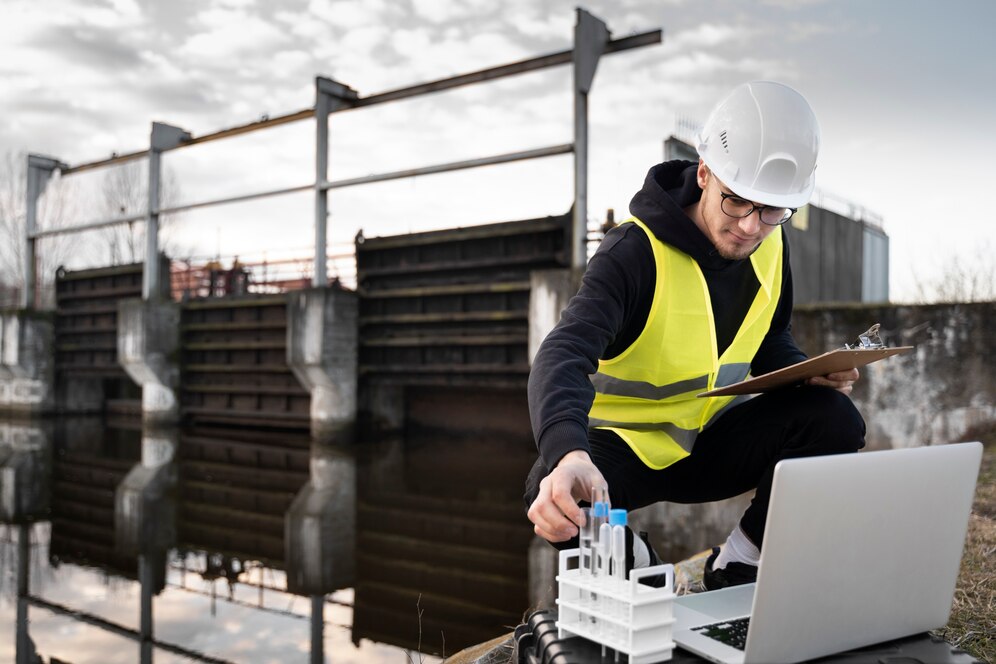Geothermal installation is a revolutionary method that utilizes the Earth’s natural heat to provide efficient heating and cooling for residential and commercial buildings. By tapping into the consistent temperatures found beneath the surface, geothermal systems offer a sustainable and cost-effective solution for climate control. Understanding how these systems work can help homeowners appreciate the benefits of investing in this technology.
The Basics of Geothermal Energy
The Earth’s core maintains a stable temperature that ranges between 45°F to 75°F, depending on geographic location. This temperature remains relatively constant, unlike the fluctuating temperatures of the air above ground. A geothermal system harnesses this underground heat through a series of components that work together to heat or cool a building.
The Main Components of a Geothermal System
A geothermal installation primarily consists of three main components: the ground loop, the heat pump, and the distribution system. Each plays a critical role in ensuring the system operates effectively.
- Ground Loop: The ground loop is a series of pipes buried underground, usually horizontally or vertically, depending on available space and soil conditions. This loop circulates a heat transfer fluid, typically a mixture of water and antifreeze, which absorbs heat from the ground in the winter and releases heat into the ground in the summer. The type of ground loop system chosen can affect the installation process and overall efficiency.
- Heat Pump: The geothermal heat pump is the heart of the system. It extracts heat from the fluid circulating through the ground loop in the winter and compresses it to increase its temperature before distributing it throughout the home. During the summer months, the process is reversed: the heat pump removes heat from the indoor air and transfers it back into the ground, cooling the building in the process.
- Distribution System: Once the heat has been transferred by the geothermal heat pump, it is distributed throughout the building using either a forced-air system or radiant floor heating. A forced-air system uses ductwork to circulate conditioned air, while radiant floor heating involves hot water running through pipes under the floor, providing even heat distribution.
The Geothermal Process
The operation of a geothermal system can be broken down into two primary cycles: heating and cooling.
- Heating Cycle: In winter, when the air outside is cold, the geothermal installation begins by circulating the heat transfer fluid through the ground loop. As the fluid moves through the buried pipes, it absorbs heat from the Earth. The warmed fluid is then pumped back into the heat pump, where it passes through a compressor. The compressor raises the temperature of the fluid even further before it is circulated throughout the building. This method provides consistent warmth and comfort during the cold months while utilizing a renewable enrgy source.
- Cooling Cycle: During summer, the process is reversed. The geothermal system extracts heat from the indoor air and transfers it back to the ground through the same ground loop. The heat pump cools the indoor air and pushes it through the distribution system, keeping the home comfortable even during the hottest days. The ground absorbs the excess heat, effectively cooling the building without relying on traditional air conditioning systems.
Advantages of Geothermal Systems
Geothermal installation comes with several benefits that make it an appealing choice for homeowners.
- Energy Efficiency: Geothermal systems are highly efficient, often achieving efficiency ratings of 300-600%. For every unit of electricity consumed, these systems can produce three to six units of heating or cooling energy. This efficiency translates into significant savings on energy bills.
- Environmental Impact: By utilizing renewable energy from the Earth, geothermal systems reduce reliance on fossil fuels and minimize greenhouse gas emissions. This makes them an environmentally friendly choice that contributes to a sustainable future.
- Longevity and Low Maintenance: Geothermal systems typically have a long lifespan, with ground loops lasting over 50 years and heat pumps lasting around 20-25 years. They also require minimal maintenance compared to traditional HVAC systems.
Conclusion
In summary, geothermal installation is a sophisticated technology that harnesses the Earth’s natural heat to provide efficient heating and cooling solutions. By understanding how geothermal systems work, homeowners can appreciate the value they bring in terms of energy efficiency, environmental sustainability, and long-term savings. Investing in a geothermal system not only enhances comfort but also contributes to a greener planet, making it a smart choice for modern living.
